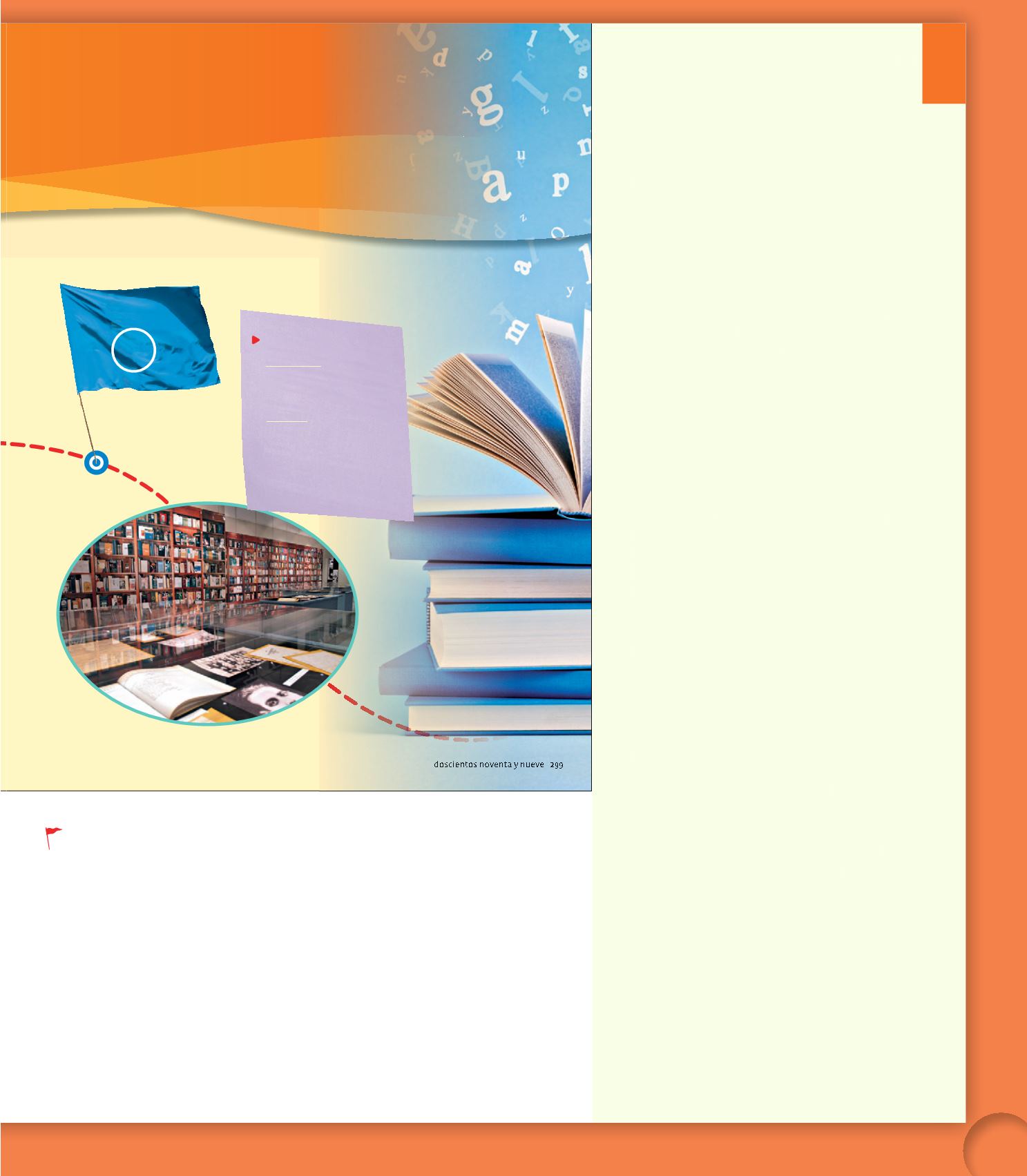

67
DESAFÍO
3
Dar consejos
y hacer
recomendaciones
Vocabulario
Literatura
Gramática
Los diminutivos
Dar consejos y hacer
recomendaciones
Exposición sobre el escritor argentino Jorge Luis Borges.
Exposición sobre el escritor argentino
Jorge Luis Borges
Jorge Luis Borges is the author of numerous
essays, poems, and short stories. He was a
language perfectionist and a true intellectual.
His writing is complex and reveals knowledge
and erudition. He was one of the founders and
promoters of the literary movement known as
ultraísmo
in the 1920s, which advocated for
a language rich in metaphors. However, later
in his life he refused any literary affiliation.
His originality, brilliant thought, and precise
prose made him the recipient of numerous
literary awards.
DESAFÍO 3
Picture Discussion
.
Have students look at the images again and
describe them orally. Then, ask them to use their
Independent Starters to initiate a discussion.
What do they think of the painting? Do they like
the building? Encourage students to express
their opinions.
Diego Rivera.
Sueño de una tarde de domingo
en la Alameda Central
(1957)
.
You may wish to talk about the word
alameda
,
which comes from
álamo
(poplar), a type of tree.
Point out the fact that the
alameda
is often a
promenade where people gather—especially on
Sundays—to go for a stroll. Have them describe
the people in the painting:
¿Quiénes son?
¿Qué representan?
Rafael Moneo. Catedral de Los Ángeles
(Estados Unidos)
.
Review some vocabulary related to construction
materials and shapes. You may need to preview
words such as
ladrillo, piedra, cemento, metal,
cuadrado, rectangular, redondo
. Ask students
about the use of some buildings:
¿Para qué sirven
las catedrales? ¿Y los ayuntamientos? ¿Qué es un
castillo? ¿Y un palacio?
Exposición sobre el escritor argentino Jorge
Luis Borges
.
Call students’ attention to the library in the photo.
Explain that libraries had a special meaning for
Borges. Not only did he work as a librarian in
Buenos Aires, but libraries often appear in his
literature as a symbol of life and of the labyrinth-
like nature of knowledge. Then have students
discuss what they understand by an anthology:
¿Qué es una antología? ¿Pueden recomendar
alguna antología a sus compañeros?
Objectives
.
By the end of Unit 6, students will be able to
– Describe and compare works of art.
– Express opinions and value judgments.
– Talk about sculpture, architecture, and
literature.
– Make recommendations and give advice.
– Talk about prominent figures in the arts,
architecture, and literature of Latin America
and Spain, and familiarize themselves with
important works of art and literature of the
Spanish-speaking world.
Creamos
Unit
6
299
Book 4 Unit 6


















